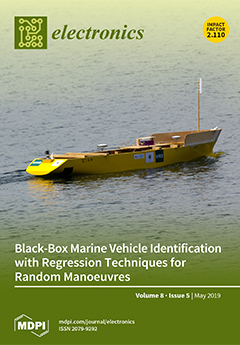In this paper, a novel doping-less tunneling field-effect transistor with Si
0.6Ge
0.4 heterojunction (H-DLTFET) is proposed using TCAD simulation. Unlike conventional doping-less tunneling field-effect transistors (DLTFETs), in H-DLTFETs, germanium and Si
0.6Ge
0.4 are used as source and channel materials,
[...] Read more.
In this paper, a novel doping-less tunneling field-effect transistor with Si
0.6Ge
0.4 heterojunction (H-DLTFET) is proposed using TCAD simulation. Unlike conventional doping-less tunneling field-effect transistors (DLTFETs), in H-DLTFETs, germanium and Si
0.6Ge
0.4 are used as source and channel materials, respectively, to provide higher carrier mobility and smaller tunneling barrier width. The energy band and charge carrier tunneling efficiency of the tunneling junction become steeper and higher as a result of the Si
0.6Ge
0.4 heterojunction. In addition, the effects of the source work function, gate oxide dielectric thickness, and germanium content on the performance of the H-DLTFET are analyzed systematically, and the below optimal device parameters are obtained. The simulation results show that the performance parameters of the H-DLTFET, such as the on-state current, on/off current ratio, output current, subthreshold swing, total gate capacitance, cutoff frequency, and gain bandwidth (
GBW) product when
Vd = 1
V and
Vg = 2
V, are better than those of conventional silicon-based DLTFETs. Therefore, the H-DLTFET has better potential for use in ultra-low power devices.
Full article





